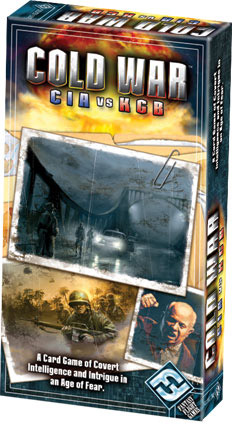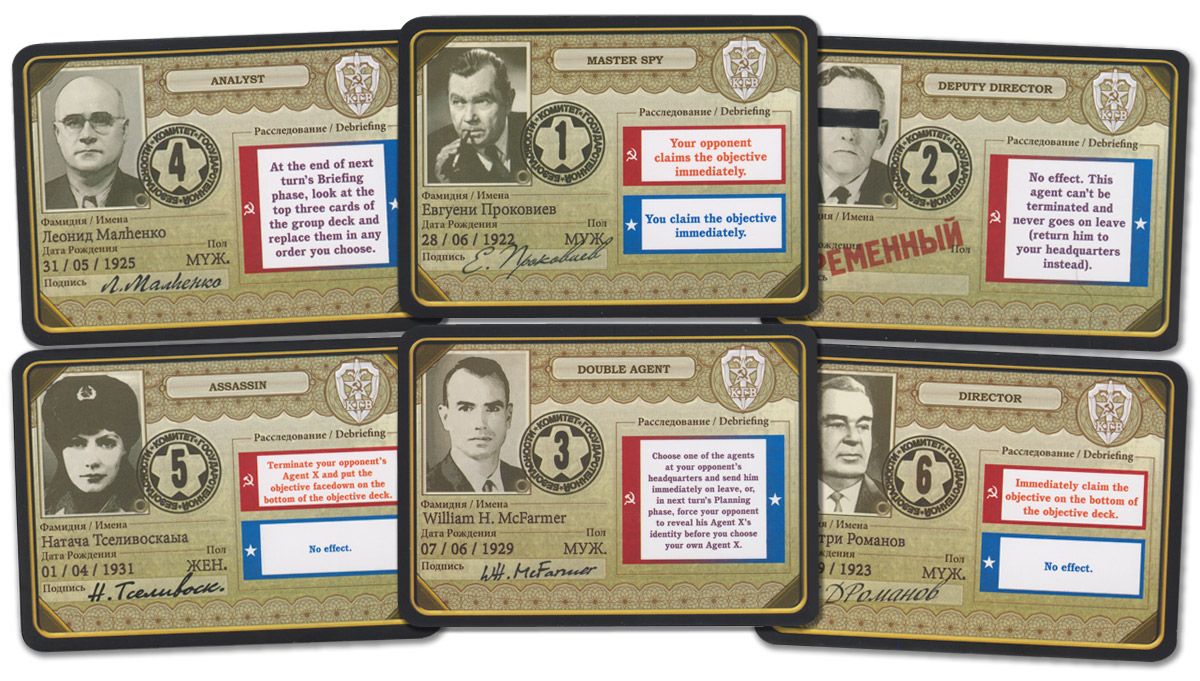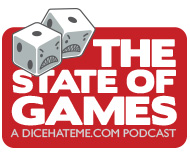Cold War: CIA vs KGB – Dosvidanya Boredom
 Throughout the last half of the 20th century, the world’s two largest super powers – the United Sates and the Soviet Union – were engaged in a deadly covert battle of wills that could have erupted in nuclear annihilation at any moment. It was a time of cunning subterfuge, dual-handed diplomacy, master spies and double agents; a time when the silent bids to be the reigning force on the planet toppled entire governments and the world seemed to brace for mass destruction.
Throughout the last half of the 20th century, the world’s two largest super powers – the United Sates and the Soviet Union – were engaged in a deadly covert battle of wills that could have erupted in nuclear annihilation at any moment. It was a time of cunning subterfuge, dual-handed diplomacy, master spies and double agents; a time when the silent bids to be the reigning force on the planet toppled entire governments and the world seemed to brace for mass destruction.
For a card game, that’s a lot of theme to pack into a box no bigger than a six-inch submarine sandwich. Amazingly, in Cold War: CIA vs. KGB, it works – and it works well.
In Cold War, players take on the role of either the CIA or the KGB and use the unique abilities of six different spies to influence the outcome of a struggle for influence over a certain country or historic event. Each country or event is worth a set number of victory points for whomever wins the struggle and claims the card. The first intelligence agency to reach 100 points wins the game – and, assumedly, the Cold War!
Each turn of the game is divided into six phases:
 1) BRIEFING: The top Objective card is turned over to reveal the country or event that the players will be competing to influence. Each Objective card is filled with numbers and symbols, but the two most important are the Stability – the target number that the players are trying to come closest to, without going over, by using Group cards during the Influence Struggle – and the number of victory points the card is worth. Objectives depicting countries are worth the most victory points, but Objective cards that depict an event can also grant the controlling player a special ability at some point in the game. A Balance token is assigned to the unlucky sap who has the least amount of victory points, which allows that player to decide who goes first in the Influence Struggle phase.
1) BRIEFING: The top Objective card is turned over to reveal the country or event that the players will be competing to influence. Each Objective card is filled with numbers and symbols, but the two most important are the Stability – the target number that the players are trying to come closest to, without going over, by using Group cards during the Influence Struggle – and the number of victory points the card is worth. Objectives depicting countries are worth the most victory points, but Objective cards that depict an event can also grant the controlling player a special ability at some point in the game. A Balance token is assigned to the unlucky sap who has the least amount of victory points, which allows that player to decide who goes first in the Influence Struggle phase.
2) PLANNING: Each player secretly chooses one of six agents to be their Agent X for the turn. Each agent has a different special ability that can influence the outcome of that turn’s Influence Struggle, or allow the player a special ability during some other phase of the current round or a future round. Although the core of the game’s mechanics lies in the Influence Struggle phase, it is the cerebral cat and mouse game during the Planning phase that is the true heart of Cold War. It may sprain your brain. It will often make you curse.
3) INFLUENCE STRUGGLE: During this phase, players use cards from the Group deck to try and gain influence over the current Objective. Players may perform one action each round: recruit a Group by pulling the top card from the draw deck, activate a readied Group – thereby enabling that group’s special ability – or they may pass. There are four types of Group cards – Military cards, which can destroy other Group cards, Political cards, which can force a Group card to switch from one player to another, Economic cards, which can ready cards that have already been used this phase so they can be used again, and Media cards, which allows a player to sneak a peek at the Group draw deck. On each Group card is an Influence number – the goal is to gather Groups that combine to come as close as possible to the Objective’s Stability number, without going over. Obviously, this is easier said than done.
4) CEASE-FIRE: After each player has passed back-to-back in the Influence Struggle, the results of the struggle are determined. The player whose Influence total is closest to the Stability number on the Group card, without going over, places their Influence Token on the card. In most cases, this means that player will win the Objective and score points equal to the victory points on the card. A player who has more combined Influence than the Objective’s Stability causes civil disorder. This is a very bad thing, as the player’s intelligence agency disavows all knowledge of the Agent X in the field and promptly terminates the agent, removing the card from the game.
5) DEBRIEFING: In this stage, players reveal their respective Agent X (unless that agent has been terminated) and that agent’s ability is resolved in order, according the agent’s Initiative number. In some cases, this can turn the tide of the struggle. For instance, when the Master Spy has been chosen by a player, the player who did not place their Influence token on the Objective takes the objective. Pretty sneaky!
6) DETENTE: This is when the agencies send in the cleaners. Victory point markers are adjusted and agents that were just in the field are placed on leave (meaning they have to sit out a round before being used again). If no one has 100 victory points, then players return to Phase 1 and repeat the long, cold war.
| Gameplay/Replay | Components & Theme | Fun |
|---|---|---|
| Overall score: 15 out of 18 - Should be required in training for new CIA operatives. | ||
Cold War: CIA vs. KGB is a game for 2 master spies, ages 12 and up, from Fantasy Flight Games. It retails for $24.95, and is available at your favorite local game store or online at fine, independent retailers like Fair Play Games.
Related posts:
- Launch Pad: In Space, No One Can Hear You Whimper
- Aquarius – The Rainbow Connection
- Chrononauts – Fourth-Dimensional Fun
- The Stars Are Right: Hold Onto Your Sanity
- DiXit:The Cure for the Common Party (Game)
Comments
3 Responses to “Cold War: CIA vs KGB – Dosvidanya Boredom”Trackbacks
Check out what others are saying...-
[…] This post was mentioned on Twitter by Chris K., Chris K.. Chris K. said: It's both cold and I have a bad cold, so I thought I'd stick with the theme – my review of Cold War: CIA vs KGB http://bit.ly/hI7lrA […]
-
[…] in a coup. Hrm, influence, coup, rival governments… sounds like the unintentional December Cold War theme at Dice Hate Me has popped up […]




Nice review. I was reading very attentively as I remembered seeing this game at my local game store before remembering after a few paragraphs that I had played this game. This review makes me interested in going back and looking into who I played it with so that I can give it another try. On the cold war theme, have you tried Twilight Struggle? Whereas it is much more in-depth than Cold War, it is another awesome cold war based game.